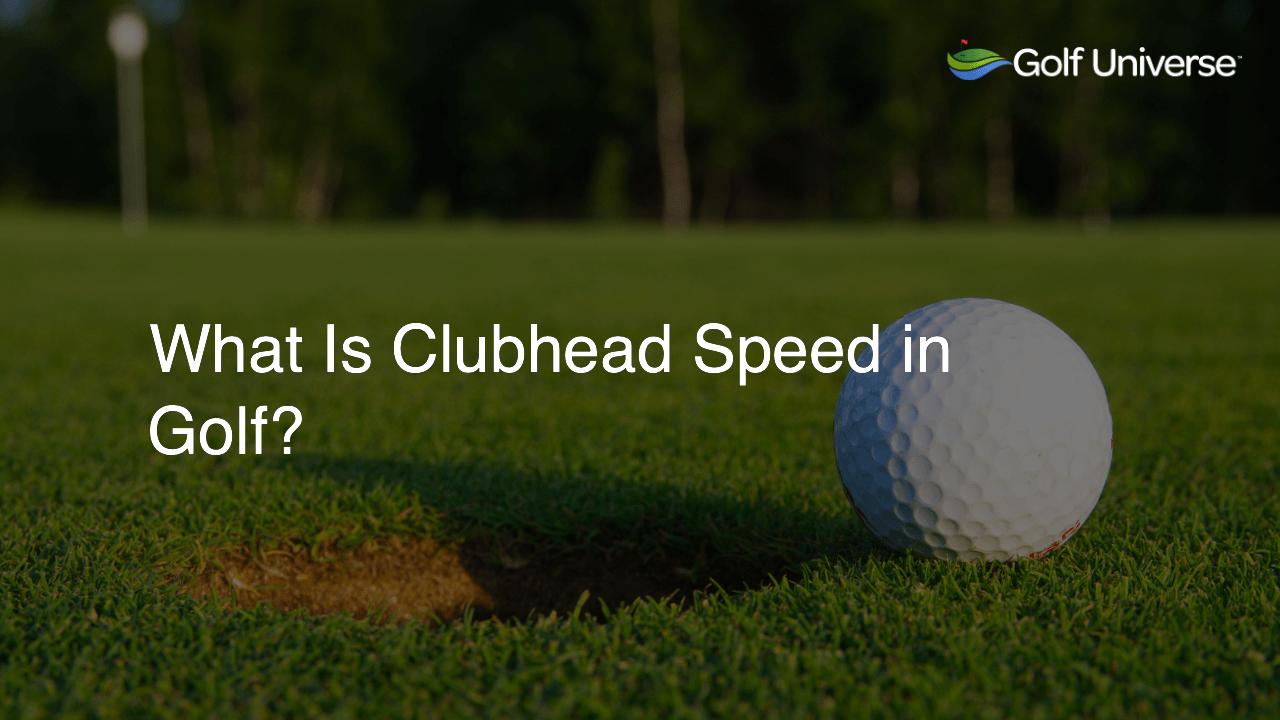Clubhead speed in golf refers to the velocity at which the head of the club moves through the air during your swing, measured in miles per hour (mph). It’s a critical factor affecting shot distance, as higher clubhead speeds generate more force, resulting in longer shots.
Understanding Clubhead Speed in Golf
Clubhead speed is a crucial factor in the sport of golf, influencing shot distance and overall performance. In simple terms, clubhead speed is the velocity at which the golf club’s head moves through the air during a swing. It is typically measured in miles per hour (mph). Greater clubhead speeds result in more force applied to the golf ball during impact, which can lead to further shots and improved accuracy.
Factors Affecting Clubhead Speed
Several factors can influence a golfer’s clubhead speed, including:
- Swing mechanics: Proper technique and the ability to generate power are vital drivers of clubhead speed. This includes factors such as posture, grip, and swing sequence.
- Physical fitness: Golfers with greater muscular strength, flexibility, and balance are more likely to achieve higher clubhead speeds.
- Equipment: Golf clubs designed to optimize clubhead speed, usually with enhanced aerodynamics or lower overall weight, can help golfers boost their swing speeds.
- Environmental conditions: Weather conditions such as altitude, temperature, and humidity can also influence clubhead speed and the total ball flight distance.
Measuring Clubhead Speed
To accurately measure clubhead speed, golfers can utilize various options, such as:
- Launch monitors: Professional-grade devices like TrackMan and FlightScope provide detailed swing statistics, including clubhead speed.
- Swing speed radar devices: Affordable portable devices like Swing Speed Radar measure clubhead speed with respectable accuracy.
- Smartphone applications: Some apps, such as SwingU, use mobile devices’ built-in accelerometers to estimate clubhead and ball speed.
Improving Clubhead Speed
To increase clubhead speed, golfers can work on the following aspects:
- Technique: Focus on improving swing mechanics through lessons with a golf coach or high-quality instructional content.
- Physical fitness: Engage in golf-specific fitness programs targeting strength, flexibility, and core stability to enhance your body’s ability to generate and transfer power.
- Club fitting: Personalized club fitting sessions can ensure your equipment is optimized to your unique swing and physical characteristics, potentially helping you achieve higher clubhead speeds.
The Connection Between Clubhead Speed and Driving Distance
Clubhead speed is a primary contributor to the driving distance in golf. A faster clubhead speed can significantly increase ball flight distance, provided the golfer maintains control and accuracy during their swing. Golfers seeking to enhance their driving distance should, therefore, prioritize refining their swing mechanics and increasing clubhead speed in their practice routines.
Golf Universe’s Stance on Clubhead Speed
At Golf Universe, a blog about golf, we believe that understanding and working on clubhead speed is an essential aspect of becoming a better golfer. By focusing on clubhead speed, golfers can enhance their overall performance and unlock the potential for improved shot accuracy and distance. Curating an optimal clubhead speed will vary depending on each golfer’s unique swing and body mechanics.
Utilizing Golf Universe’s Resources
Golf Universe provides a wealth of resources, tips, and expert advice to help golfers of all skill levels increase their clubhead speed. By reviewing our instructional articles and videos on swing mechanics and fitness, golfers can identify areas that need improvement and incorporate specific techniques into their practice routines.
Industry Insights From Golf Universe
At Golf Universe, we also cover the latest trends and breakthroughs in golf equipment and technology. By staying informed about new club designs and innovations aimed at maximizing clubhead speed, golfers can make educated decisions about the gear best suited to their needs and style.
FAQ Section: Clubhead Speed in Golf
Here are some frequently asked questions related to clubhead speed in golf. These questions provide concise and direct insights into the topic for those interested in learning more about improving golf performance.
What is considered a good clubhead speed?
A good clubhead speed varies depending on the golfer’s skill level. Amateurs typically have clubhead speeds around 80-95 mph, while professionals can reach speeds upward of 110-130 mph. Faster speeds often result in longer shots, but the most important factor is consistent, solid contact.
How does clubhead speed affect ball flight and shot shape?
Higher clubhead speeds can influence ball flight by generating more backspin, lift, and increased carry distance. Additionally, faster clubhead speeds can provide golfers more control over shot shape, but require a precise face angle at impact to achieve desired results.
Can golf club weight have an impact on clubhead speed?
Yes, the weight of a golf club can significantly impact clubhead speed. Lighter clubs allow for faster swings, while heavier clubs may promote slower but steadier clubhead speeds. Personal preference plays a key role in determining the optimal club weight for each golfer.
Although clubhead speed and swing tempo are interconnected, they’re not directly proportional. A golfer can have a smooth, slow swing tempo while still generating a high clubhead speed through good timing and power transfer at impact. Similarly, a fast swing tempo doesn’t always guarantee increased clubhead speed.
Do professional golfers always have a high clubhead speed?
Professional golfers often have high clubhead speeds, but not all professionals rely on that to excel. What sets professional golfers apart is their ability to maintain accuracy, control, and consistency in their shots while achieving optimal clubhead speeds suited for their playing style.











